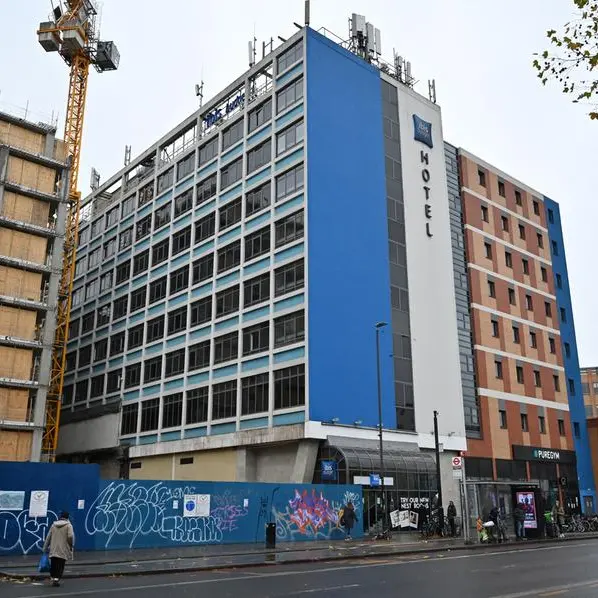19 October 2016
Admitting that something is going wrong can be a hard thing to do in any organisation, particularly when large amounts of time, effort and budget have already been invested in a project. It is, however, only by seeing when something isn’t working that you can take the first steps to fixing the underlying problems. The same logic applies to retailers and their loyalty programmes.
Sometimes loyalty and rewards programmes just don’t work, or don’t work as well as they should do or indeed as well as they did when you first devised them. The first step for any retailer who suspects a problem with their programme should be to look out for the key indicators which show that their programme isn’t working. There are many signs to look out for and it could be a combination of many factors. We’ve been helping retailers create and optimise their loyalty programs for over 25 years and here are some of the most common tell-tale signs your programme isn’t working:
1) Your programme isn’t driving repeat purchases
One of the main objectives of a loyalty programme is to choose you time and time again so, if your loyalty programme isn’t prompting customers to make repeat purchases, then it isn’t working. While the timeframes will vary between products and sectors, the ultimate end goal of any loyalty strategy should be to build customer relationships, ensuring that you are their only choice when they want to buy something again. If this isn’t the case then your loyalty programme isn’t just ineffective, it is failing. At this point, it’s time to head back to the drawing board and really dive into further reasons why your loyalty strategy is failing in its core purpose.
2) You’re not using data to personalise
Any loyalty strategy that isn’t using data to create a more personalised customer experience, isn’t fulfilling its potential. Data shouldn’t just be hoarded in dusty spreadsheets; it should be used to go beyond relevant product recommendations to include the personalised perks that customers might want to take advantage of, whether it be next day delivery to their office or collection from that shop they pass every day on their morning commute. To do this effectively, you need to ensure that the data you request from your most loyal customers goes much further than a simple email for the mailing list, and extends to their past purchases making relevant suggestions that show you know them and make their experience more convenient.
3) Your staff see your programme as an afterthought
Your staff are fundamental to driving customer loyalty and devotion, so there needs to be complete buy-in at all levels. They need to fully understand how your strategy works both in store and online, as well as how it drives revenue and a superior customer experience. They also need to feel that the programme supports them in helping to meet their sales targets and other goals such as brand advocacy. If your loyalty programme only crops up in conversation at the very end of the purchase, it’s probably already too late to engage them in the programme. Staff should be empowered with the technology and information required to engage customers from the moment they walk into the store; it’s what consumers expect nowadays
4) Your customers don’t know your programme exists
Your programme doesn’t need to be popular with everyone, but it does need to be well-known amongst both the customers you already have and the customers you’re trying to target through your marketing efforts. If customers don’t know that your programme exists, it’s not going to drive traffic into your stores or online and you’re certainly not going to reach your program membership targets. You’ve already made the investment in building a loyalty strategy and program so you should invest in promoting your loyalty programme. So many retailers are brilliant at promoting their brand and advertising their next season’s collection; use that same approach to promote your loyalty program and the incremental revenue will follow.
5) Your strategy has become tired and predictable
Your loyalty strategy needs to surprise and delight your customers in order to keep them coming back, and ultimately to drive deep devotion to your brand. By providing something a little bit special and unexpected, you let your customers know that they’re valued and not just being asked to collect points for the sake of collecting points. In order to remain competitive and capture the attention of your customers, you also need to ensure that your programme is sufficiently different from others in the market; your program needs to get you noticed!
6) Your programme is too complicated
If you are running a “published” loyalty program (as opposed to a program which your customers are not aware that they are members of such as many luxury retailers use) updating and adding features to entice new subscribers while ensuring that your programme doesn’t get too complicated is a delicate balancing act. Too many features and “rules” turn people off and simplicity, both in execution and in its purpose, should be front of mind. Customers need to understand the value of their participation, how they will be rewarded for their loyalty and how they can reach the next tier. Your loyalty programme must also be consistent wherever your customer chooses to shop, whether it’s online or in store. Rewards and perks should carry over and the personalisation and assistance that you provide online should also be present when in your physical store too.
7) Loyalty isn’t tracked and targets aren’t set
Too many businesses are finding it difficult to prove that their loyalty programmes are commercially viable; this is partly because they are not properly tracking their loyalty programmes or setting themselves targets for what they want their programme to drive. How can a brand measure success if goals aren’t put in place? Frequently loyalty programmes are abandoned because you’ve not done the upfront analysis of what the success metrics should be; and there should be more than one! Additionally, the costs of running the loyalty programme can exceed the perceived value the program is bringing to your business; this is particularly true if your sole key performance indicator (KPI) is transactional revenue. KPIs should be set across every touchpoint, whether you’re tracking new sign-ups, repeat purchases or positive reviews and customer advocacy such as referrals. It should also be clear how ROI is going to be measured and improved. To achieve this, loyalty strategy has to extend beyond the marketing department; loyalty metrics just be set for all areas of the business from logistics and fulfillment to digital experience teams and of course product development and sales departments.
8) Your programme only rewards transactional customer behaviour
Customers will only engage with a rewards programme if they feel they are being adequately rewarded. The most common customer complaint with loyalty programmes is that it takes too long to accumulate enough points or rewards to see any benefit. If you’re a valued customer, you should expect to see rewards from day one, and you should also see the programme working beyond a transactional level. A loyalty strategy shouldn’t just reward purchases, but also customer advocacy, attending events, or simply for being a longstanding and therefore valued member.
Any opinions expressed here are the author’s own.
© Opinion 2016
Admitting that something is going wrong can be a hard thing to do in any organisation, particularly when large amounts of time, effort and budget have already been invested in a project. It is, however, only by seeing when something isn’t working that you can take the first steps to fixing the underlying problems. The same logic applies to retailers and their loyalty programmes.
Sometimes loyalty and rewards programmes just don’t work, or don’t work as well as they should do or indeed as well as they did when you first devised them. The first step for any retailer who suspects a problem with their programme should be to look out for the key indicators which show that their programme isn’t working. There are many signs to look out for and it could be a combination of many factors. We’ve been helping retailers create and optimise their loyalty programs for over 25 years and here are some of the most common tell-tale signs your programme isn’t working:
1) Your programme isn’t driving repeat purchases
One of the main objectives of a loyalty programme is to choose you time and time again so, if your loyalty programme isn’t prompting customers to make repeat purchases, then it isn’t working. While the timeframes will vary between products and sectors, the ultimate end goal of any loyalty strategy should be to build customer relationships, ensuring that you are their only choice when they want to buy something again. If this isn’t the case then your loyalty programme isn’t just ineffective, it is failing. At this point, it’s time to head back to the drawing board and really dive into further reasons why your loyalty strategy is failing in its core purpose.
2) You’re not using data to personalise
Any loyalty strategy that isn’t using data to create a more personalised customer experience, isn’t fulfilling its potential. Data shouldn’t just be hoarded in dusty spreadsheets; it should be used to go beyond relevant product recommendations to include the personalised perks that customers might want to take advantage of, whether it be next day delivery to their office or collection from that shop they pass every day on their morning commute. To do this effectively, you need to ensure that the data you request from your most loyal customers goes much further than a simple email for the mailing list, and extends to their past purchases making relevant suggestions that show you know them and make their experience more convenient.
3) Your staff see your programme as an afterthought
Your staff are fundamental to driving customer loyalty and devotion, so there needs to be complete buy-in at all levels. They need to fully understand how your strategy works both in store and online, as well as how it drives revenue and a superior customer experience. They also need to feel that the programme supports them in helping to meet their sales targets and other goals such as brand advocacy. If your loyalty programme only crops up in conversation at the very end of the purchase, it’s probably already too late to engage them in the programme. Staff should be empowered with the technology and information required to engage customers from the moment they walk into the store; it’s what consumers expect nowadays
4) Your customers don’t know your programme exists
Your programme doesn’t need to be popular with everyone, but it does need to be well-known amongst both the customers you already have and the customers you’re trying to target through your marketing efforts. If customers don’t know that your programme exists, it’s not going to drive traffic into your stores or online and you’re certainly not going to reach your program membership targets. You’ve already made the investment in building a loyalty strategy and program so you should invest in promoting your loyalty programme. So many retailers are brilliant at promoting their brand and advertising their next season’s collection; use that same approach to promote your loyalty program and the incremental revenue will follow.
5) Your strategy has become tired and predictable
Your loyalty strategy needs to surprise and delight your customers in order to keep them coming back, and ultimately to drive deep devotion to your brand. By providing something a little bit special and unexpected, you let your customers know that they’re valued and not just being asked to collect points for the sake of collecting points. In order to remain competitive and capture the attention of your customers, you also need to ensure that your programme is sufficiently different from others in the market; your program needs to get you noticed!
6) Your programme is too complicated
If you are running a “published” loyalty program (as opposed to a program which your customers are not aware that they are members of such as many luxury retailers use) updating and adding features to entice new subscribers while ensuring that your programme doesn’t get too complicated is a delicate balancing act. Too many features and “rules” turn people off and simplicity, both in execution and in its purpose, should be front of mind. Customers need to understand the value of their participation, how they will be rewarded for their loyalty and how they can reach the next tier. Your loyalty programme must also be consistent wherever your customer chooses to shop, whether it’s online or in store. Rewards and perks should carry over and the personalisation and assistance that you provide online should also be present when in your physical store too.
7) Loyalty isn’t tracked and targets aren’t set
Too many businesses are finding it difficult to prove that their loyalty programmes are commercially viable; this is partly because they are not properly tracking their loyalty programmes or setting themselves targets for what they want their programme to drive. How can a brand measure success if goals aren’t put in place? Frequently loyalty programmes are abandoned because you’ve not done the upfront analysis of what the success metrics should be; and there should be more than one! Additionally, the costs of running the loyalty programme can exceed the perceived value the program is bringing to your business; this is particularly true if your sole key performance indicator (KPI) is transactional revenue. KPIs should be set across every touchpoint, whether you’re tracking new sign-ups, repeat purchases or positive reviews and customer advocacy such as referrals. It should also be clear how ROI is going to be measured and improved. To achieve this, loyalty strategy has to extend beyond the marketing department; loyalty metrics just be set for all areas of the business from logistics and fulfillment to digital experience teams and of course product development and sales departments.
8) Your programme only rewards transactional customer behaviour
Customers will only engage with a rewards programme if they feel they are being adequately rewarded. The most common customer complaint with loyalty programmes is that it takes too long to accumulate enough points or rewards to see any benefit. If you’re a valued customer, you should expect to see rewards from day one, and you should also see the programme working beyond a transactional level. A loyalty strategy shouldn’t just reward purchases, but also customer advocacy, attending events, or simply for being a longstanding and therefore valued member.
Any opinions expressed here are the author’s own.
© Opinion 2016























